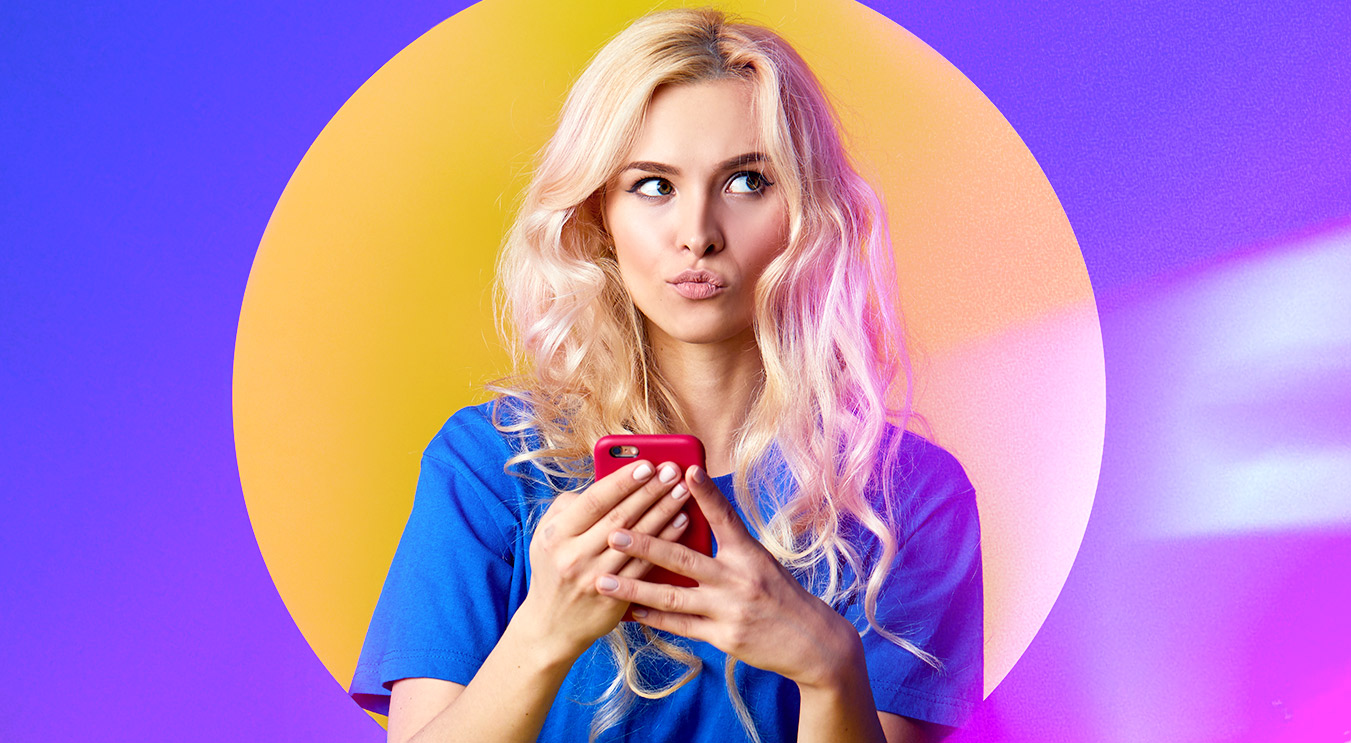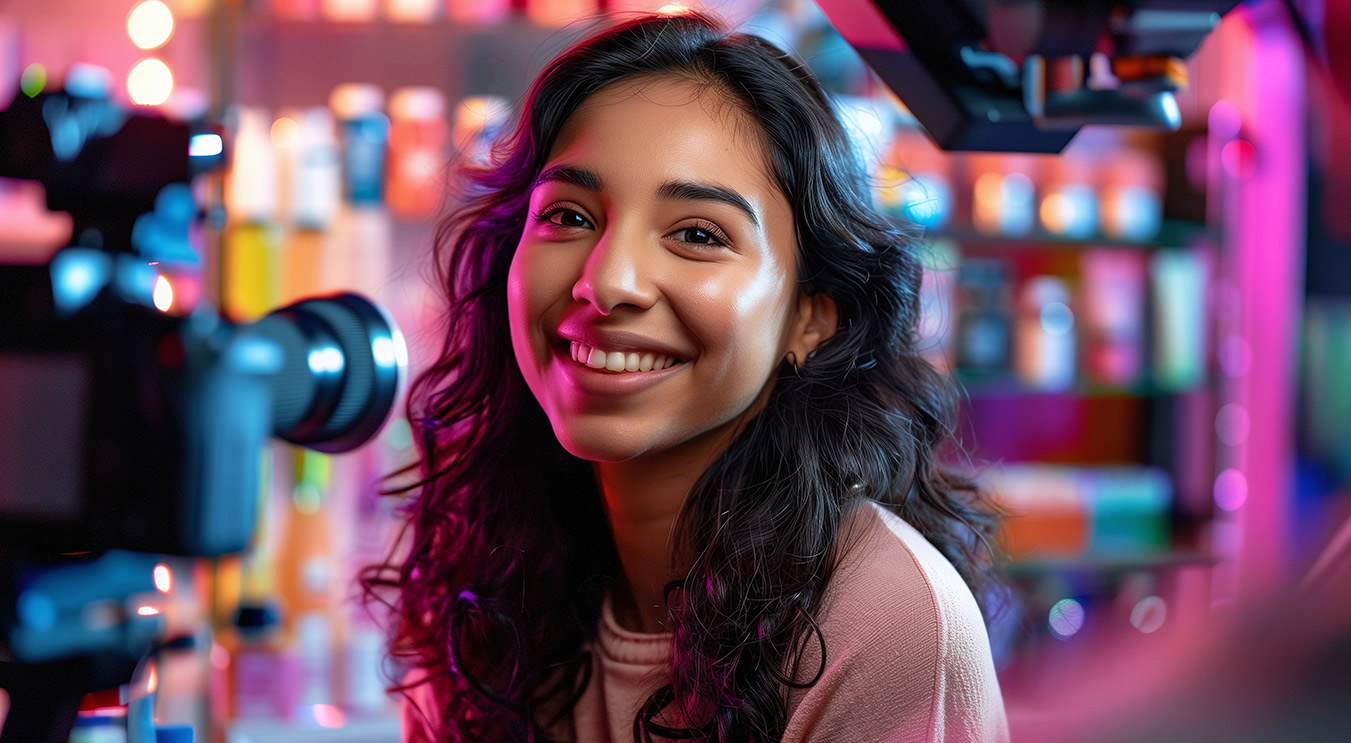Social Media Influencer marketing has quickly become one of the most efficient ways for brands to connect with their target audience, monitor sentiments around the brand, and most importantly, drive sales of products and services.
A few years ago, influencer marketing blew up in South Africa and cemented its place as an effective marketing tactic on home soil and around the world. Since then, many consumer-facing brands such as Woolworths, Clicks, L’Oreal, and Coca-Cola have hopped onto the influencer bandwagon but we’ve observed that some brands still have some skepticism when it comes to this digital marketing tactic.
We can say for a fact that influencer marketing campaigns work like a charm. Still, there are a few things to carefully consider before planning one, especially if your organisation does not have the expertise to execute an influencer campaign.
If you are a brand manager looking into influencer marketing for your products or services, this blog will tell you exactly what to expect. We will cover the impact of influencer marketing, the basics of planning an influencer marketing campaign, and most importantly, if it is worth your company’s buck.
Is Influencer Marketing Impactful?
One of the biggest trends to impact the retail world was the “TikTok made me buy it” trend which is essentially people reviewing items they were influenced to buy on TikTok. As more people watch the content, they find themselves going to the store and buying what they saw on TikTok and the cycle continues. Retailers caught wind of this and didn’t waste time setting up shelves with TikTok-famous products. These TikTok shelves were reported in countries worldwide, and traditional media platforms featured TikTok columns in their editorials. This trend unintentionally set the new platinum standard for influencer marketing.
For influencer marketing managers, seeing people buy your product because of your strategy and influencer selection is literally gold. When you are rolling out an influencer campaign, the most nerve-wracking part is waiting for the campaign to yield results. Having a carefully crafted influencer campaign and the perfect blend of professionals to execute can ensure that the campaign yields results beyond the social media metrics, for example, an influencer collaboration or ambassadorship.
But before we go any further, let’s clarify what an influencer is:

Over the years, the idea of who is a social media influencer has evolved. Nowadays, it’s a norm for individuals with a high social media following to be considered influencers by some, but this is not correct. Being an influencer goes over and above being popular online. There has to be a relationship built on trust between the content creator and the audience before the creator can be considered as an influencer. The audience knows that whenever the influencer’s content shows up on their feed, they will part with content feeling inspired, maybe a little brighter, or emotionally elevated. An authentic influencer listens to their audience, genuinely care about them, and strive to add value in their lives. A caring influencer does not gatekeep. They understand that they need to provide their followers with meaty content to keep them returning. Be it how to order from a restaurant’s secret menu, innovative product hacks, hidden gems etc. Influencers are empathetic to their audience and don’t want to contribute to the myriad of meh content online. They understand that the relationship they have with their audience is a give-and-take. These kinds of content creators are the ones who are able to influence the buying behavior of their audience.
One of the conversations we’ve observed playing out online is the dynamic between the influencer and their followers. One Twitter user asked her followers “Why they don’t support her paid posts?” and went on to say that “considering the amount of free content” available on her page, asking for a like should not be a big deal. What a loaded statement. As you may imagine, the feedback was not comforting to the influencer. Some said the posts were screaming paid for and were just a ‘turn-off’. Others boldly replied by saying, “You are not Beyonce, and we are not your stans”. The general sentiment is that advertorial content is not something people are particularly excited about and that, when possible, they will try to avoid it. Unless they do not know they are currently consuming paid content or if it’s really enjoyable.
Influencer selection and outreach:
Now, the resistance of paid posts on social media is a worldwide phenomenon. People are generally more discerning of social media content than in previous years. Over time we’ve well-versed in automatically detecting the tale-tell signs of an ad whenever we are consuming social media content. For example, one of the signs of a typical paid-for post is a creator aggressively praising a product they have never used before. As a brand, you need to select people who know how to weave in products or services with their organic content. The paid posts should not stick out like a sore thumb. The best influencers are the individuals who can get creative with products and you won’t even be able to tell that you are consuming an ad until you are halfway through. Pay careful attention to the kinds of engagement the influencer’s paid posts receive. If a majority of their posts have comments from real people who are actually talking about what is being advertised or sharing their experience, then that is a glistening green flag.
One thing to be wary of when selecting influencers is paying too much attention to the follower count. The follower count is a good indicator that they are active and growing but that is it. The level of engagement will give a true indication of how their audience generally responds to their content and is more important than followers. Another green flag to look out for is if the creator is also present. Does the influencer engage with their followers under their posts? If a follower has to ask where influencers got a particular item from, is the influencer helpful? Is their content to the benefit of the audience in any way or does the influencer treat their followers like fans? An individual who uses their platform only to serve themselves will not make an ideal candidate to be in an influencer campaign unless they’ve amassed their following by virtue of their status in society. Celebrities and people with a close proximity to famous people aren’t influencers but they leverage the interest that the public has in their lives to promote products.
How much does influencer marketing cost?

Okay so you would like to experiment with influencer marketing but are not sure if you can afford it? Well you probably can but the budget directly impacts the results. There are many variables when it comes to how much you will pay. The follower count which determines the influencer tier, engagement rate, reach, and other metrics should be considered. Then the quality of the content needs to be assessed. Some influencers charge more because their content is executed well, beautifully shot and is just watch-worthy. The lead time and deadline can also affect the price. Last-minute briefings drive the price up because it places pressure on the influencer to shoot an excellent piece of content fast- forcing them to rearrange their plans etc. If the influencer has to travel, bring a partner to assist with shooting or if there are specific items that need to be bought then that will drive up the price. The biggest price driver however is the usage fees. In recent times, social media content creators have rightfully become more protective of their intellectual property. Having an open conversation about what your intentions with the content during the influencer outreach phase can protect both parties from incurring costs and falling into exploitation. Additional costs to consider is a paid media budget. Paid media can come in handy when you need to boost the content to reach more people, or maybe an influencer created an excellent piece of content that didn’t get the views and engagement it deserved for whatever reason.
If your team does not have the expertise to conceptualise, plan and roll out an influencer campaign then that would need to be outsourced to an agency. Every agency has its own costing formula but the good news is you can opt to pay only for what you really need help with. Perhaps your team only needs help with influencer outreach and campaign reporting and will manage everything else in-house.
Is Influencer Marketing Worth It?
Well, did you think the campaign through thoroughly? Did you select the right individuals and were they given creative freedom? Did you support the influencers to succeed? If yes, then yes the influencer campaign will yield some good results. For brands that are still new to influencer marketing, the best way to go is to ask an agency such as Arora Online to assist with planning a campaign.
Is Influencer Marketing Right for My Brand/Product?
Well is your product or service any good? We’ve seen many brands rolling out an influencer or PR campaign on social media despite the product or service not satisfactory towards a majority of customers. We hate to be the ones to break to you but a poor product and service will not be fixed by PR and Influencer Marketing. As a matter of fact, it will impact the perception of your brand/ business negatively.

As mentioned earlier on, it has become much easier to detect paid content that holds no value. The moment your unsatisfied customers realise that you are promoting a bad product and service, it will evoke a negative feeling from them, and trust us when we say you don’t want that. Your customers will use that as an opportunity to air their frustrations about your product under the influencer’s posts and will immediately label the influencer as a fraud. From there it’s downhill as more negative comments come in, and all parties involved will lose credibility.
We saw this play out recently when a popular beverage brand rolled out an influencer campaign to promote their fruit juices; however, before that, many individuals complained about the juices having a mold-like substance inside them. The complaints were shared directly to the brand on one of the big social media platforms. The brand did not immediately address the issue by means of a statement but rolled out an influencer campaign on the same platform. The content focused on consuming the products with care. When dissatisfied customers picked up on this, they called out the influencer and brand for encouraging people to buy defective products. Some individuals felt like it was irresponsible for the creator to agree to the campaign after seeing all complaints and pictures of mold-like substance in the juice cartoons were circulating online. What infuriated some users was that the influencers content “seemed like it was blaming the customer”. This is not the kind of feeling you want to bring out from your audience because at that point, the trust goes out the window. Additionally, an influencer partnership should not be used to deflect from a serious issue surrounding a brand.
The future of influencer marketing

An understanding of what is happening within the realm of influencer marketing, you will be able to see the benefits and plan your campaigns properly. Every brand team must get on top of influencer marketing trends and its evolution in order to get the most out of it.
As mentioned, this marketing tactic is here for a long time however, just like anything else we’ve come to know and love it will have to evolve. For starters, there will be a great emphasis on long term partnerships. We’ve observed that many influencers are encouraging brands who approached them to sign up for a long-term partnership instead of a quick once-off deal.
The use of AI Generated characters in the place of real human influencers is creeping in on us. While this may come cheaper to the brand, an AI character cannot develop a relationship with the viewer however not every single product you use will require an influencer campaign. For example, we’ve seen one of the major banks in SA use AI Characters for an awareness campaign on TikTok. Another example is KFC’s virtual Colonel who was created for an interactive social media campaign. In 2022, Gartner predicted that by 2026 CMOs will dedicate 30% of their influencer and celebrity marketing budgets to virtual influencers. AI Influencers give the brand more control over messaging and cost less than a traditional influencer campaign but we don’t see AI characters completely replacing human influencers.
As stated earlier, the social media users have become overly conscious of what content they consume. The internet is already laden with mediocre content so once people realise that an AI is in front of them they will most likely ignore it.
Influencers may also be a drive for positive change in their community or industry. For example, makeup brands have been slated by beauty influencers for not having inclusive products, particularly for people of colour. Since then, more beauty brands are fighting harder to be favorable in the eyes of the influencers and the general public. We’ve observed beauty brands make a lot more noise about their POC-friendly products. We expect to see more influencers lending their platform to real issues that affect their followers.
While TikTok won the hearts of the Gen Z audience, we may see more people spend more time on Instagram because of the current challenges TikTok is facing in the States. Influencers in South Africa have also reported stagnation on their TikTok accounts due to the platform applying pressure on people to add some spend behind their posts for views and engagements.
Regarding the content, being authentic will literally be the difference between a successful and flop campaign. Encouraging influencers to be truthful and genuine when making product recommendations will earn the trust of the viewer. As mentioned earlier, we are becoming an ad resistant society and with all the mediocre content on the internet fighting for the little time we have, it’s important for your influencer’s content to actually provide some kind of value to the viewer.
Agency Vs In House Influencer Management
Managing an influencer campaign is tedious and requires individuals who are experts in the field of digital marketing. You need to ensure that the team who is planning the campaign is well-versed with digital media strategy, has a sharp eye for good content, and has the precision of an eagle when selecting influencers. Usually, an agency will be a culmination of experts across various marketing spheres and when they come together, can produce a campaign that will yield a return on investment. Additionally, agencies have formed relationships with influencers and can easily manage the influencers.
The vast variety of resources you can find in an agency may not always be possible with an in-house team. While an in-house team can dedicate all of their time on the product, they are unable to look at the campaign with fresh eyes and this lack of new perspective can lead to a campaign that is lacking in creativity. One of the benefits of using an agency is that because they worked with a plethora of brands across various categories, they’ve had an opportunity to experiment, play around, make mistakes and use all those learnings to better campaigns for all clients. It all comes down to what is important for your brand and what is the best use of the money.

In Conclusion
Now that you have a greater understanding of what an influencer marketing campaign entails, you can make an informed decision on whether influencer marketing is right for your brands and products/ services. If you have a product or service that excites you, works well, and makes the lives of the customers easier then your brand can benefit from an influencer campaign. Influencer marketing is a great marketing tactic to use if you would like to humanise your brand, influence perception and make your brand memorable. If you have any questions, contact us and let’s see if we can help you take your brand to new heights.
Written by Paige Mashinini




